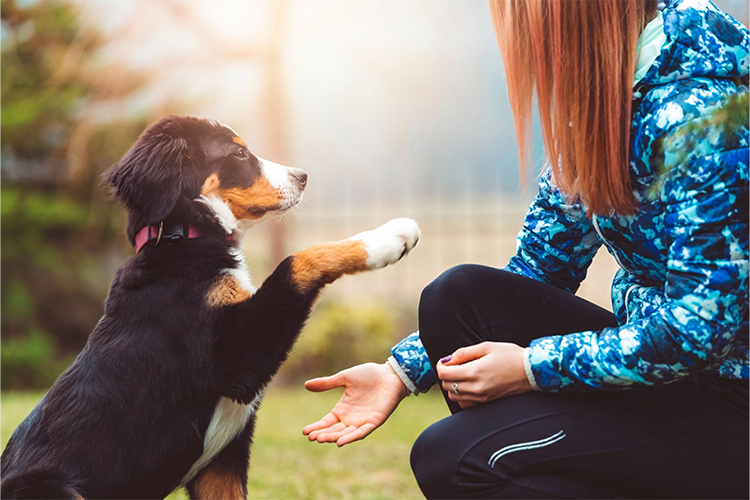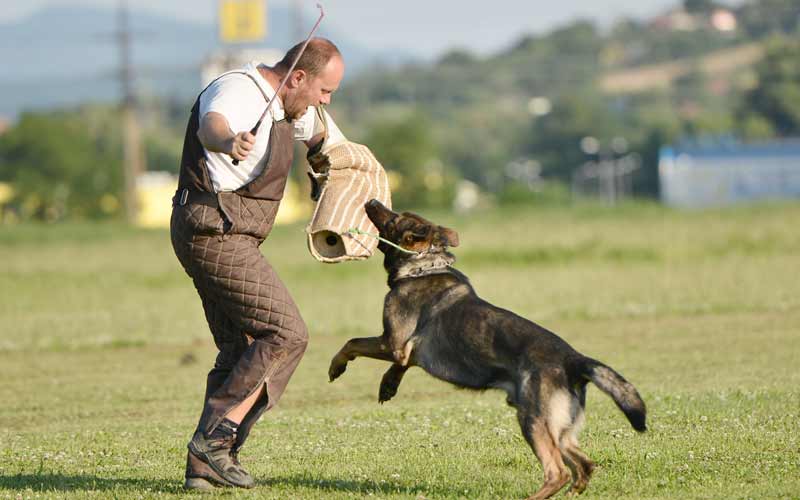Understanding Canine Body Movement Throughout Dog Training
Understanding Canine Body Movement Throughout Dog Training
Blog Article
Vital Tips for Effective Dog Training: A Guide for Family Pet Owners
Effective pet training is a diverse process that needs a tactical approach customized to both the family pet's character and the owner's goals. Understanding how to browse these obstacles can significantly boost the training experience, ultimately changing the connection in between owner and dog.
Comprehending Dog Actions
Comprehending pet dog actions is important for efficient training and fostering a harmonious connection between dogs and their owners. dog training. Pet dogs connect primarily through body language, vocalizations, and actions, making it critical for owners to interpret these signals precisely.

Socializing plays a substantial duty in dog actions; direct exposure to numerous settings, people, and various other animals can substantially affect a dog's character. Aspects such as breed features and private temperament need to direct training approaches, as some breeds might have specific behavioral attributes that require tailored strategies. By comprehending these components, owners can develop a helpful environment that urges positive actions, causing successful training results and a deeper bond with their animals.
Establishing Regular Commands
Effective interaction with your canine begins with establishing consistent commands. This foundational component of training is crucial for promoting understanding between you and your pet dog. Consistency in the commands you make use of ensures that your pet can reliably link specific words or expressions with the desired actions.
When choosing commands, pick clear, distinct words that are simple to say and set apart from each other. Prevent using similar-sounding commands that may perplex your canine. As an example, making use of "sit" and "stay" is ideal, but "rest" and "hit" might lead to misconceptions.
Additionally, keep the same tone and volume for every command. Pets are delicate to vocal hints, so differing your tone can develop complication.
It is equally essential to make sure that all relative get on the very same page relating to the commands made use of. A united front in command use will certainly avoid blended signals and enhance the understanding procedure.
Positive Reinforcement Strategies
The power of positive reinforcement in pet training depends on its ability to encourage wanted habits with rewards and appreciation. This technique is based in the principle that behaviors followed by desirable results are more probable to be duplicated. By including positive support right into your training regimen, you can effectively form your pet's behavior in a constructive fashion.
To execute positive support, it's crucial to determine what encourages your canine, whether it be deals with, toys, or verbal appreciation. When your canine executes a wanted activity, such as resting on command, immediately compensate them with a treat or affection. This organization between the command and the favorable outcome enhances their understanding.
It's crucial to timing the rewards appropriately; delivering the support within secs of the desired habits assists your dog make the connection (dog training). Furthermore, uniformity is essential-- guarantee that all relative utilize the very same commands and reward systems to avoid complication

Slowly, you can minimize the frequency of treats as your dog learns the habits, transitioning to commend or periodic incentives. This method not only imp source fosters a solid bond in between you and your dog however likewise advertises a favorable knowing setting, making educating an enjoyable experience for both.
Socialization and Interaction
Continually exposing your canine to a range of atmospheres, individuals, and other pets is crucial for their social development. Socialization should begin early, ideally during the important home window of 3 to 14 weeks, when pups are most responsive to brand-new experiences. Nonetheless, older dogs can also benefit from ongoing socialization initiatives.
Introduce your canine to different settings, such as parks, pet-friendly stores, and urban locations. This direct exposure aids them adjust to various stimulations, reducing anxiety and anxiety actions. Motivate positive interactions with various other pets and individuals, making certain that these experiences are risk-free and controlled to promote confidence.
Utilize organized playdates with courteous dogs, as this can boost your pet's social abilities and teach them ideal behavior. Obedience courses and training sessions also provide outstanding chances for socialization, permitting your pet dog to communicate with others in a monitored atmosphere.
Display your canine's body movement throughout communications, as this will certainly assist you determine their comfort level. Gradually boost exposure to more tough scenarios while making sure that each experience is favorable. A well-socialized canine is extra likely to display balanced habits, making them a happiness to have in any browse around this web-site kind of setting.
Attending To Usual Training Challenges
Every pet owner will run into training challenges at some factor, regardless of their canine's age or socializing degree. Identifying typical problems such as stubbornness, interruptions, and fearfulness can assist in creating effective methods for improvement.

Interruptions throughout training sessions can derail focus. To combat this, begin training in a quiet environment with marginal stimuli. Slowly introduce interruptions as the canine ends up being much more skilled in commands. Short, regular training sessions are likewise efficient in maintaining attention.
Terror can prevent a pet's learning procedure. Steady desensitization to the resource of worry, combined with positive support, can aid alleviate anxiousness. Persistence is important; never compel a dog into a scenario that triggers distress, as this may aggravate the problem.
Ultimately, understanding and addressing these usual difficulties with a structured strategy will foster a more productive training experience, reinforcing the bond between pet and owner while advertising efficient discovering.
Final Thought
In recap, successful pet training depends on a comprehensive understanding of canine habits, the facility of constant commands, and the application of favorable reinforcement strategies. Socialization plays an essential role in establishing well-adjusted pets, while attending to usual training difficulties calls for patience and adaptability. By carrying out these vital methods, animal owners can cultivate a solid bond with their pet dogs and More Info advertise desirable habits, inevitably bring about a harmonious partnership between humans and their canine buddies.
Understanding canine behavior is necessary for effective training and fostering a harmonious partnership in between canines and their proprietors.Socializing plays a significant role in canine habits; direct exposure to numerous environments, people, and other pets can dramatically impact a canine's temperament.The power of positive reinforcement in canine training lies in its capability to motivate wanted behaviors through benefits and praise. By integrating positive reinforcement into your training program, you can properly form your pet's actions in a positive fashion.
In summary, successful pet training counts on a comprehensive understanding of canine actions, the establishment of consistent commands, and the application of positive reinforcement techniques.
Report this page